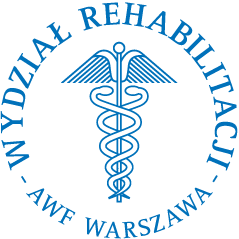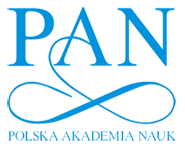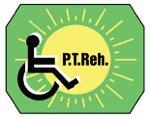


|
Current issue
Archive
Manuscripts accepted
About the journal
Editorial board
Reviewers
Abstracting and indexing
Contact
Instructions for authors
Publication charge
Ethical standards and procedures
Editorial System
Submit your Manuscript
|
4/2023
vol. 37 Original article
The indirect effects of basic psychological needs on the relationship between physical activity and mental health in adults with disabilities: a cross-sectional study
Roxy Helliker O'Rourke
1
,
Catherine Sabiston
1
,
Linda Trinh
1
,
Kelly Arbour-Nicitopoulos
1
1.
Faculty of Kinesiology and Physical Education, Mental Health and Physical Activity Research Centre,
University of Toronto, Toronto, Canada
Advances in Rehabilitation, 2023, 37(4), 1–11
Online publish date: 2023/11/21
Article file
- 2023-04-ar-01-popr.pdf
[0.52 MB]
ENW EndNote
BIB JabRef, Mendeley
RIS Papers, Reference Manager, RefWorks, Zotero
AMA
APA
Chicago
Harvard
MLA
Vancouver
1. Goodley D. Disability studies: An interdisciplinary introduction. London: Sage Publication Ltd; 2016. 2.
Haagsma JA, Graetz N, Bolliger I, Naghavi M, Higashi H, Mullany EC, et al. The global burden of injury: incidence, mortality, disability-adjusted life years and time trends from the Global Burden of Disease study 2013. Inj Prev. 2016; 22(1): 3–18. 3.
World report on disability. World Health Organization; 2011. 4.
Dunham A, Kinnear D, Allan L, Smiley E, Cooper SA. The relationship between physical ill-health and mental ill-health in adults with intellectual disabilities. J Intellect Disabil Res. 2018; 62(5): 444–53. 5.
Tough H, Siegrist J, Fekete C. Social relationships, mental health and wellbeing in physical disability: a systematic review. BMC Public Health. 2017; 17(1): 414. 6.
Williams R, Murray A. Prevalence of depression after spinal cord injury: a meta-analysis. Arch Phys Med Rehabil. 2015; 96(1): 133–40. 7.
Keyes CL, Dhingra SS, Simoes EJ. Change in level of positive mental health as a predictor of future risk of mental illness. Am J Public Health. 2010; 100(12): 2366–71. 8.
Diener E, Wirtz D, Tov W, Kim-Prieto C, Choi DW, Oishi S, et al. New well-being measures: Short scales to assess flourishing and positive and negative feelings. Soc Indic Res. 2010; 97(2): 143–56. 9.
Keyes CL. The mental health continuum: from languishing to flourishing in life. J Health Soc Behav. 2002; 43(2): 207–22. 10.
Martin Ginis KA, Van Der Scheer JW, Latimer-Cheung AE, Barrow A, Bourne C, Carruthers P, et al. Evidence-based scientific exercise guidelines for adults with spinal cord injury: an update and a new guideline. Spinal Cord. 2018; 56(4): 308–21. 11.
Latimer-Cheung AE, Martin Ginis KA, Hicks AL, Motl R, Pilutti L, Duggan M, et al. Development of evidence-informed physical activity guidelines for adults with Multiple Sclerosis. Arch Phys Med Rehabil. 2013; 94: 1829–36. 12.
Verschuren O, Peterson MD, Balemans AC, Hurvitz EA. Exercise and physical activity recommendations for people with cerebral palsy. Dev Med Child Neurol. 2016; 58(8): 798–808. 13.
Oliveira de Carvalho A, Filho ASS, Murillo-Rodriguez E, Rocha NB, Carta MG, Machado S. Physical Exercise For Parkinson's Disease: Clinical And Experimental Evidence. Clin Pract Epidemiol Ment Health. 2018; 14: 89–98. 14.
Austin S, Qu H, Shewchuk RM. Health care providers' recommendations for physical activity and adherence to physical activity guidelines among adults with arthritis. Prev Chronic Dis. 2013; 10: E182. 15.
Lubans D, Richards J, Hillman C, Faulkner G, Beauchamp M, Nilsson M, et al. Physical Activity for Cognitive and Mental Health in Youth: A Systematic Review of Mechanisms. Pediatrics. 2016; 138(3): e20161642. 16.
Deci EL, Ryan RM. Self-determination theory: A macrotheory of human motivation, development, and health. Can Psychol. 2008; 49(3): 182–85. 17.
Ryan RM, Deci EL. Self-determination theory: Basic psychological needs in motivation, development, and wellness. New York: Guilford Press; 2017. 18.
Connell JP, Wellborn JG. Competence, Autonomy, and Relatedness: A Motivational Analysis of Self-System Processes. In: GunnarMR, Sroufe LA, editors. Self Processes and Development. Hillsdale: Lawrence Erlbaum Associates Inc; 1991. p. 43–77. 19.
Tillery AD, Varjas K, Roach AT, Kuperminc GP, Meyers J. The importance of adult connections in adolescents' sense of school belonging: Implications for schools and practitioners. J Sch Violence. 2013; 12(2): 134–55. 20.
Banack HR, Sabiston CM, Bloom GA. Coach autonomy support, basic need satisfaction, and intrinsic motivation of paralympic athletes. Res Q Exerc Sport. 2011; 82(4): 722–30. 21.
Evans MB, Shirazipour CH, Allan V, Zanhour M, Sweet SN, Ginis KA, et al. Integrating insights from the parasport community to understand optimal Experiences: The Quality Parasport Participation Framework. Psychol Sport Exerc. 2018; 37: 79–90. 22.
Shirazipour CH, Evans MB, Caddick N, Smith B, Aiken AB, Ginis KA, et al. Quality participation experiences in the physical activity domain: Perspectives of veterans with a physical disability. Psychol Sport Exerc. 2017; 29: 40–50. 23.
Tomasone JR, Wesch NN, Ginis KA, Noreau L. Spinal cord injury, physical activity, and quality of life: A systematic review. Kinesiol Rev. 2013; 2(2): 113–29. 24.
Slemp GR, Vella-Brodrick DA. Optimising employee mental health: The relationship between intrinsic need satisfaction, job crafting, and employee well-being. J Happiness Stud. 2014; 15: 957–77. 25.
Teixeira PJ, Carraça EV, Markland D, Silva MN, Ryan RM. Exercise, physical activity, and self-determination theory: a systematic review. Int J Behav Nutr Phys Act. 2012; 9: 78. 26.
Biddle S. Physical activity and mental health: evidence is growing. World Psychiatry. 2016; 15(2): 176–7. 27.
Doré I, Sylvester B, Sabiston C, Sylvestre MP, O'Loughlin J, Brunet J, Bélanger M. Mechanisms underpinning the association between physical activity and mental health in adolescence: a 6-year study. Int J Behav Nutr Phys Act. 2020; 17(1): 9. 28.
DiPietro L, Al-Ansari SS, Biddle SJ, Borodulin K, Bull FC, Buman MP, et al. Advancing the global physical activity agenda: recommendations for future research by the 2020 WHO physical activity and sedentary behavior guidelines development group. Int J Behav Nutr Phys Act. 2020; 17(1): 143. 29.
Erdfelder E, Faul F, Buchner A. GPOWER: A general power analysis program. Beh Res Meth Instr Comp. 1996; 28: 1–11. 30.
Martin Ginis KM, Latimer AE. The leisure time physical activity questionnaire for people with spinal cord injury (LTPAQ-SCI). SCI Action Canada [Internet]. 2007. Available from: http://sciactioncanada.ca/researchpublications.cfm. 31.
Martin Ginis KA, Phang SH, Latimer AE, Arbour-Nicitopoulos KP. Reliability and validity tests of the leisure time physical activity questonnaire for people with spinal cord injury. Arch Phys Med Rehabil. 2012; 93(4): 677–82. 32.
Martin Ginis KA, Ubeda-Colomer J, Alrashidi AA, Nightingale TE, Au JS, Currie KD et al. Construct validation of the leisure time physical activity questionnaire for people with SCI (LTPAQ-SCI). Spinal Cord. 2021; 59(3): 311–8. 33.
McPhee PG, Gorter JW, MacDonald MJ, Martin Ginis KA. The effects of an individualized health-risk report intervention on changes in perceived inactivity-related disease risk in adults with cerebral palsy. Disabil Health J. 2020; 13(2): 100868. 34.
Keyes CLM. Brief Description of the Mental Health Continuum Short Form (MHC-SF). Available from: https://www.aacu.org/sites/default/ files/MHC-SFEnglish.pdf. 35.
Franken K, Lamers SMA, Ten Klooster PM, Bohlmeijer ET, Westerhof GJ. Validation of the Mental Health Continuum-Short Form and the dual continua model of well-being and psychopathology in an adult mental health setting. J Clin Psychol. 2018; 74(12): 2187–202. 36.
Lamers SM, Westerhof GJ, Bohlmeijer ET, ten Klooster PM, Keyes CL. Evaluating the psychometric properties of the mental health continuum‐short form (MHC‐SF). J Clin Psychol. 2011; 67(1): 99–110. 37.
Deci EL, Ryan RM, Gagné M, Leone DR, Usunov J, Kornazheva BP. Need satisfaction, motivation, and well-being in the work organizations of a former eastern bloc country: A cross-cultural study of self-determination. Pers Soc Psychol Bull. 2001; 27(8): 930–42. 38.
Johnston MM, Finney SJ. Measuring basic needs satisfaction: Evaluating previous research and conducting new psychometric evaluations of the Basic Needs Satisfaction in General Scale. Contemp Educ Psychol. 2010; 35(4): 280–96. 39.
Aguinis H, Gottfredson RK, Joo H. Best-practice recommendations for defining, identifying, and handling outliers. Organ Res Methods. 2013; 16(2): 270–301. 40.
Akoglu H. User's guide to correlation coefficients. Turk J Emerg Med. 2018; 18(3): 91–3. 41.
Hayes AF. Introduction to Mediation, Moderation, and Conditional Process Analysis: A Regression-Based Approach. 3rd ed. New York: Guilford Press; 2013. 42.
Flanagin A, Frey T, Christiansen SL, AMA Manual of Style Committee. Updated guidance on the reporting of race and ethnicity in medical and science journals. JAMA. 2021; 326(7): 621–7. 43.
Saxena S, Van Ommeren M, Tang KC, Armstrong TP. Mental health benefits of physical activity. J Ment Health. 2005; 14(5): 445–51. 44.
Steinmo S, Hagger-Johnson G, Shahab L. Bidirectional association between mental health and physical activity in older adults: Whitehall II prospective cohort study. Prev Med. 2014; 66: 74–9. 45.
Kawanishi CY, Greguol M. Physical activity, quality of life, and functional autonomy of adults with spinal cord injuries. Adap Phys Activ Q. 2013; 30(4): 317–37. 46.
Saebu M, Sørensen M. Factors associated with physical activity among young adults with a disability. Scand J Med Sci Sports. 2011; 21(5): 730–8. 47.
Saebu M, Sørensen M, Halvari H. Motivation for physical activity in young adults with physical disabilities during a rehabilitation stay: A longitudinal test of self‐determination theory. J Appl Soc Psychol. 2013; 43(3): 612–25. 48.
How YM, Whipp P, Dimmock J, Jackson B. The effects of choice on autonomous motivation, perceived autonomy support, and physical activity levels in high school physical education. J Teach Phys Educ. 2013; 32(2): 131–48. 49.
Ntoumanis N, Quested E, Reeve J, Cheon SH. Need supportive communication: Implications for motivation in sport, exercise, and physical activity. In: Jackson B, Dimmock J, Compton J, editors. Persuasion and Communication in Sport, Exercise, and Physical Activity. Abington: Routledge; 2018. p. 155–69. 50.
Arnautovska U, Fleig L, O'callaghan F, Hamilton K. Older adults’ physical activity: The integration of autonomous motivation and theory of planned behaviour constructs. Aust Psychol. 2019; 54(1): 46–54. 51.
Bigby C, Clement T, Mansell J, Beadle‐Brown J. ‘It's pretty hard with our ones, they can't talk, the more able bodied can participate’: Staff attitudes about the applicability of disability policies to people with severe and profound intellectual disabilities. J Intellect Disabil Res. 2009; 53(4): 363–76. 52.
Desai MM, Lentzner HR, Weeks JD. Unmet need for personal assistance with activities of daily living among older adults. The Gerontologist. 2001; 41(1): 82–8. 53.
Calder A, Sole G, Mulligan H. The accessibility of fitness centers for people with disabilities: A systematic review. Disabil Health J. 2018; 11(4): 525–36. 54.
Rimmer JH. Use of the ICF in identifying factors that impact participation in physical activity/rehabilitation among people with disabilities. Disabil Rehabil. 2006; 28(17): 1087– 95. 55.
Weiss J, Diamond T, Demark J, Lovald B. Involvement in Special Olympics and its relations to self-concept and actual competency in participants with developmental disabilities. Res Dev Disabil. 2003; 24(4): 281–305. 56.
Morris J, Oliver T, Kroll T, MacGillivray S. The importance of psychological and social factors in influencing the uptake and maintenance of physical activity after stroke: A structured review of the empirical literature. Stroke Res Treat. 2012; 2012: 195249 57.
Sherrill C. Adapted Physical Activity, Recreation and Sport: Crossdisciplinary and Lifespan. 5th ed. Boston: WCB/McGraw Hill; 1998. 58.
McCabe PC, Meller PJ. The relationship between language and social competence: How language impairment affects social growth. Psychol Sch. 2004; 41(3): 313–21. 59.
Haugen T, Säfvenbom R, Ommundsen Y. Sport participation and loneliness in adolescents: The mediating role of perceived social competence. Curr Psychol. 2013; 32: 203–16. 60.
Watson NJ, Parker A. Sports, religion and disability. London: Routledge; 2016. 61.
Shirazipour C, Latimer-Cheung A. Promoting participation: Outcomes indicative of a quality physical activity experience for veterans with a disability. Ann Behav Med. 2018; 52 Suppl 1: S225. 62.
Goodwin D, Johnston K, Gustafson P, Elliott M, Thurmeier R, Kuttai H. It’s okay to be a quad: Wheelchair rugby players’ sense of community. Adapt Phys Activ Q. 2009; 26(2): 102–17. 63.
D'Eloia MH, Sibthorp J. Relatedness for youth with disabilities: Testing a recreation program model. J Leis Res. 2014; 46(4): 462–82. 64.
Orr K, Tamminen KA, Sweet SN, Tomasone JR, Arbour-Nicitopoulos KP. “I’ve had bad experiences with team sport”: Sport participation, peer need-thwarting, and need-supporting behaviors among youth identifying with physical disability. Adapt Phys Act Q. 2018; 35(1): 36–56. 65.
Deci EL, Ryan RM. The General Causality Orientations Scale: Self-determination in Personality. J Res Pers. 1985; 19(2): 109–34. 66.
Véronneau MH, Koestner RF, Abela JR. Intrinsic need satisfaction and well–being in children and adolescents: An application of the self–determination theory. J Soc Clin Psychol. 2005; 24(2): 280–92. 67.
Williams GC, Halvari H, Niemiec CP, Sørebø Ø, Olafsen AH, Westbye C. Managerial support for basic psychological needs, somatic symptom burden and work-related correlates: A self-determination theory perspective. Work Stress. 2014; 28(4): 404–19. 68.
McDougall J, Evans J, Baldwin P. The importance of self-determination to perceived quality of life for youth and young adults with chronic conditions and disabilities. Remedial Spec Educ. 2010; 31(4): 252–60. 69.
Nota L, Ferrari L, Soresi S, Wehmeyer M. Self‐determination, social abilities and the quality of life of people with intellectual disability. J Intellect Disabil Res. 2007; 51(11): 850–65. 70.
Lachapelle Y, Wehmeyer ML, Haelewyck MC, Courbois Y, Keith KD, Schalock R, et al. The relationship between quality of life and self‐determination: an international study. J Intellect Disabil Res. 2005; 49(10): 740–4. 71.
Bull FC, Al-Ansari SS, Biddle S, Borodulin K, Buman MP, Cardon G, et al. World Health Organization 2020 guidelines on physical activity and sedentary behaviour. Br J Sports Med. 2020; 54(24): 1451–62. 72.
Ginis KA, Hicks AL, Latimer AE, Warburton DE, Bourne C, Ditor DS, et al. The development of evidence-informed physical activity guidelines for adults with spinal cord injury. Spinal Cord. 2011; 49(11): 1088–96.
This is an Open Access journal, all articles are distributed under the terms of the Creative Commons Attribution-NonCommercial-ShareAlike 4.0 International (CC BY-NC-SA 4.0). License (http://creativecommons.org/licenses/by-nc-sa/4.0/), allowing third parties to copy and redistribute the material in any medium or format and to remix, transform, and build upon the material, provided the original work is properly cited and states its license.
|
    |